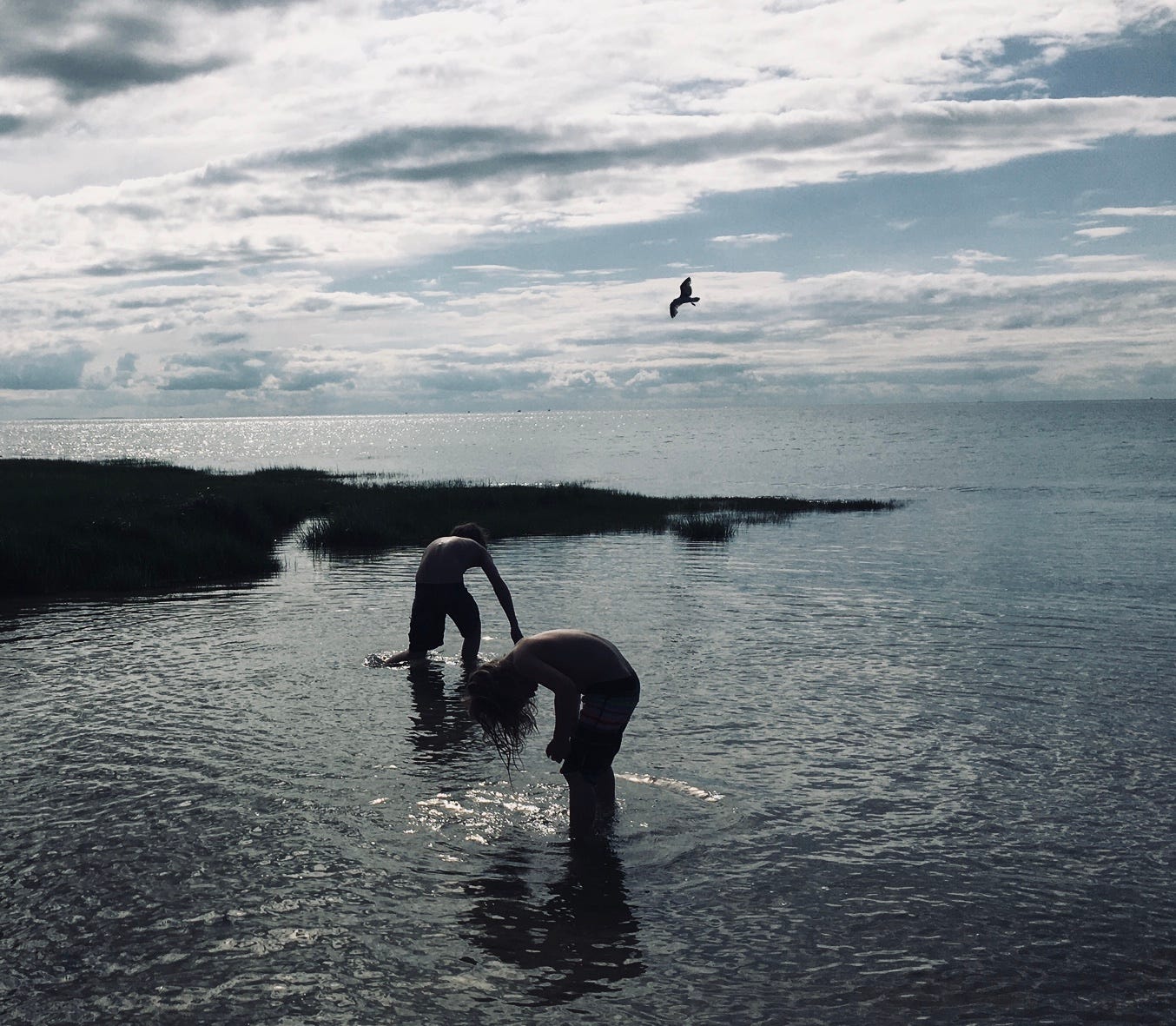Location practice.
The dualities that we experience are necessary to drop us into the center, but the center is where we find ourselves, and each other.
I don’t often write about things that I can’t say inside a story, because we are storied creatures, and who likes to be lectured at? So this is not a story…I’m telling you now so you can go if you please.
But if you are curious, I want to say something about qigong practice, and why this form continues to be such a deep spiral for me. I’ve been doing it now for about half my life, and though it’s not the practice that gets me sweaty or works my abs or satiates my love of complex choreographed phrases, it is the one that emerges when I am most in need of locating myself.
It’s funny that it does this, because practicing also reminds me I am not central - or even special - which after some small systemic resistance, is so refreshing. That’s the beauty of this form, out of it arises a cosmology that is not anti-anything, and says yes to everything. This is the Dao.
Qigong is not an easy practice to initiate, but once there, it helps me slow down, like watching a fan gradually come to stillness. Using imagery that breathes the earth back into focus - like “parting the clouds, moving the mist” - qigong reminds me, in real time, that I am not the sum of my parts; I am whole, of the elements. A central focus of qigong practice is working to smooth out the edges of our actions, our breath, our thinking; to move with a grace that matches our careening planet, but does not try to exceed it.
There are many sects of qigong at this point, and though its roots are very old, many of them have been developed in the past 50 or so years, when TCM was packaged and 'sold' to the West. (That's not to say it isn't a good package, just that it was intentional). Lots of qigong 'masters' practice with the tenet that this form is 'ancient', and therefore wise/better/sacred/etc. We like that word: ancient. My personal sense is that while it is in fact ancient, it is also equally emergent. It arose out of shamanic practices of eastern Asia, which are mimicked across continents b/c shamanic practice is universal, and not that different from one corner of the world to the next. This is true because it’s practiced through an animistic lens, a folding of our selves into the story of nature in an inclusive way. From moving with the landscape, people (shamans and not-shamans alike) found pathways of energy (meridians), source points and pressure points that correspond to organs. An understanding of the body that arose not from picking it apart and looking close, but from widening the lens and seeing it from the macrocosmic view.
From the body, all our ancestors, no matter where we are from, made connections to how energy fractures and returns, is broken and restored. Because qigong (and Daoism) has mostly been included and threaded through history - not severed - it is quite unique. Practicing this form serves as a kind of memory palace, infusing the movement with the science and physiology of being well in relation to a place, including what is happening right now. So yes, it is ancient, but it is also emergent.
This is why it keeps being interesting to me. It is a living practice of widening the lens and finding moments of true, honest embodiment, not just of oneself, but of this whole spinning, cycling place. I can get there mediating on a cushion, but I find embodiment is experienced best by moving my body. And the emergent part is important. We have to trust that what arises from within us is a true reflection of what is arising around us. We do not have to be masters. We do not have to name every lineage. We do not have to do something other than be present in order to have permission to exist. The dualities that we experience (master/novice, dark/light, yin/yang, old/emergent) are necessary to drop us into the center, but the center is where we find ourselves, and each other.
One of my favorite ways to end a practice is to stand still and let my surroundings see me completely. It’s a simple, tricky switch of consciousness. Like taking off a skin, standing naked inside the belly of the earth, and letting the giant trees and clouds and birds see me fully. I call it the ‘regarding practice’. It can feel a little scary, dropping my ‘boundary’ so fully, but when it really happens, the practice jumps to life, and I am no longer separate. In being ‘regarded’, I unleash the wisdom of reciprocity, and the place truly becomes the teacher. This is the practice, this is the medicine.
“Nature is all there is, self-arising and self-resolving, in circulation. If that’s the case, what are we? Spontaneously arising nature looking at itself.”
~Clarissa Gunawan
Want to practice locating now? Here’s a free recording of a class I taught recently, and here’s some other classes on offer, because its good for me and its good for you.





